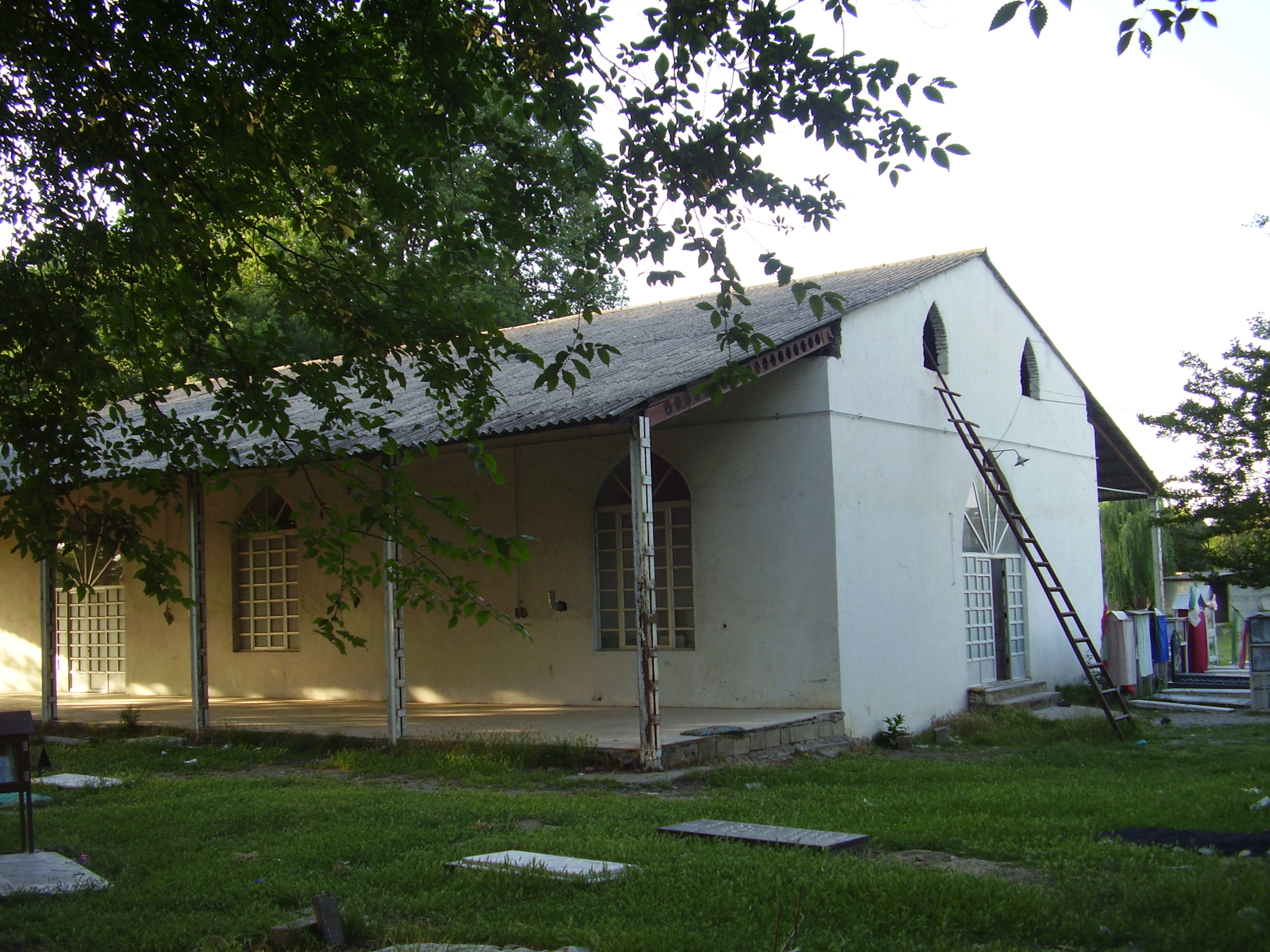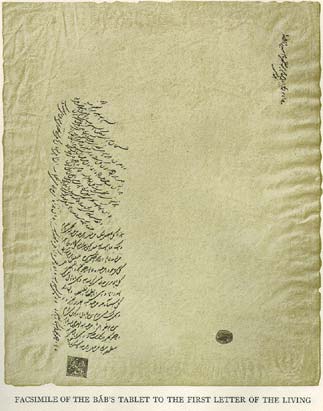|
Battle Of Fort Tabarsi
Shaykh Ṭabarsí, or more correctly the Shrine of Shaykh Tabarsí, was the location of a battle between the forces of the Shah of Persia and the Bábís over a period of seven months: October 10, 1848 to May 10, 1849. The commanding prince in charge of the government troops, unable to force the surrender of the followers of the Báb, resorted to a plan of betrayal to capture the remaining Bábís. The shrine is located in Mazandaran Province, Iran. Leading up to the Battle Mullá Husayn-i-Bushru'i, one of the most prominent Bábís and the very first person to accept the new faith, marched with 202 of his fellow disciples, under instructions from the Báb, from Mashhad to the Shrine of Shaykh Tabarsí with the Black Standard raised, fulfilling an Islamic prophecy. The mission was most likely proclamatory but possibly also to rescue another Bábí leader, Quddús, who was under house arrest in Sárí. After being attacked at the town of Barfurush (home of Quddús), the group ... [...More Info...] [...Related Items...] OR: [Wikipedia] [Google] [Baidu] |
Letters Of The Living
The Letters of the Living ( ar, حروف الحي) was a title provided by the Báb to the first eighteen disciples of the Bábís, Bábí Religion. In some understandings the Báb places himself at the head of this list (as the first letter). In this article, the former notation will be used except when specifically said otherwise. Mystical meaning The Báb named the first eighteen believers in his mission as the ''Letters of the Living'' (''Ḥurúfu'l-ḥayy'' in Arabic (language), Arabic). One of the Báb's titles was the "Primal Point" (''nuqti-yi-úlá''). As Baháʼí scholar Moojan Momen explains: The Eighteen 'Letters of the Living' manifested themselves in the last, i.e. the Muhammadan Manifestation in the persons of the The Fourteen Infallibles, Fourteen Holy Souls (i.e. the Muhammad, Prophet himself, his daughter Fatimah, Fatima, and the Twelve Imams of whom the first, 'Ali, was her husband, and the remainder of her descendants) and the The Four Deputies, Four Gate ... [...More Info...] [...Related Items...] OR: [Wikipedia] [Google] [Baidu] |
Battles Involving Iran ...
This is a list of wars involving the Islamic Republic of Iran and its predecessor states. It is an unfinished historical overview. See also * History of Iran * Cyrus in Babylon and the Jewish connection * Persian Corridor (a.k.a. Anglo-Soviet invasion of Iran) * Consolidation of the Iranian Revolution (1979–1982/83) Notes External links BBC WW2 People's War – Persia InvadedThe Document Collection on the 1945–46 Iranian Crisisat the Cold War International History Project Dr. Mohammad Mosaddeq: Symbol of Iranian Nationalism and Struggle Against Imperialism by the Iran Chamber Society {{Asia topic, List of wars involving, title=Lists of wars involving Asian countries Iran Wars Wars War is an intense armed conflict between states, governments, societies, or paramilitary groups such as mercenaries, insurgents, and militias. It is generally characterized by extreme violence, destruction, and mortality, using regular ... [...More Info...] [...Related Items...] OR: [Wikipedia] [Google] [Baidu] |
History Of The Bahá'í Faith
History (derived ) is the systematic study and the documentation of the human activity. The time period of event before the invention of writing systems is considered prehistory. "History" is an umbrella term comprising past events as well as the memory, discovery, collection, organization, presentation, and interpretation of these events. Historians seek knowledge of the past using historical sources such as written documents, oral accounts, art and material artifacts, and ecological markers. History is not complete and still has debatable mysteries. History is also an academic discipline which uses narrative to describe, examine, question, and analyze past events, and investigate their patterns of cause and effect. Historians often debate which narrative best explains an event, as well as the significance of different causes and effects. Historians also debate the nature of history as an end in itself, as well as its usefulness to give perspective on the problems of the p ... [...More Info...] [...Related Items...] OR: [Wikipedia] [Google] [Baidu] |
Conference Of Badasht
The Conference of Badasht (Persian: گردهمایی بدشت) was an instrumental meeting of the leading Bábís in Iran during June–July 1848. In June–July 1848 over a period of 3 weeks, a number of Bábí leaders met in the village of Badasht at a conference, organized in part and financed by Baháʼu'lláh, centered on Táhirih and Quddús, that set in motion the public existence and promulgation of the Bábí religion. Around eighty men and Táhirih attended the conference. The conference is considered by Bábís and Baháʼís as a signal moment that demonstrated that Islamic Sharia law had been abrogated and superseded by Bábí law, as well as a key demonstration of the thrust of raising the social position of women. Leading figures and events After the Báb's arrest in early 1848, Mulla Muhammad Ali Barfurushi, aka Quddús, had sought to raise the Black Standard in Mashad. However the city forced the Bábís out, (it was later officially raised by Mullá Husayn ... [...More Info...] [...Related Items...] OR: [Wikipedia] [Google] [Baidu] |
Journal De Constantinople
A journal, from the Old French ''journal'' (meaning "daily"), may refer to: *Bullet journal, a method of personal organization *Diary, a record of what happened over the course of a day or other period *Daybook, also known as a general journal, a daily record of financial transactions *Logbook, a record of events important to the operation of a vehicle, facility, or otherwise *Record (other) *Transaction log, a chronological record of data processing *Travel journal In publishing, ''journal'' can refer to various periodicals or serials: *Academic journal, an academic or scholarly periodical **Scientific journal, an academic journal focusing on science **Medical journal, an academic journal focusing on medicine **Law review, a professional journal focusing on legal interpretation *Magazine, non-academic or scholarly periodicals in general **Trade magazine, a magazine of interest to those of a particular profession or trade **Literary magazine, a magazine devoted to literat ... [...More Info...] [...Related Items...] OR: [Wikipedia] [Google] [Baidu] |
Mullá Husayn
Mullá Husayn (1813 – 2 February 1849) ( fa, ملا حسين بشروئي Mulláh Hossein Boshru'i), also known by the honorific ''Jináb-i Bábu'l-Báb'' ("Gate of the Gate"), was a Persian religious figure in 19th century Persia and the first Letter of the Living of the Bábí religion. He was the first person to profess belief in the Báb as the promised Mahdi of Islam and a Manifestation of God, founding a new independent religion. The title of Bábu'l-Báb was bestowed upon him by the Báb in recognition of his status as the first Bábí. As a young man Mullá Husayn studied Usuli Shia theology, becoming an authorized member of the Shia clerical order at the age of 21. He later became a follower of the millenarian Shaykhi school, studying under its leader Siyyid Kazim Rashti and traveling to debate prominent Usuli clerics to gain support for Rashti's teachings. After Rashti's death, Mullá Husayn led a group of Shaykhis who traveled in search of the Mahdi. On 22 May ... [...More Info...] [...Related Items...] OR: [Wikipedia] [Google] [Baidu] |
Mullá Yusif-i-Ardibili
The Letters of the Living ( ar, حروف الحي) was a title provided by the Báb to the first eighteen disciples of the Bábí Religion. In some understandings the Báb places himself at the head of this list (as the first letter). In this article, the former notation will be used except when specifically said otherwise. Mystical meaning The Báb named the first eighteen believers in his mission as the ''Letters of the Living'' (''Ḥurúfu'l-ḥayy'' in Arabic). One of the Báb's titles was the "Primal Point" (''nuqti-yi-úlá''). As Baháʼí scholar Moojan Momen explains: The Eighteen 'Letters of the Living' manifested themselves in the last, i.e. the Muhammadan Manifestation in the persons of the Fourteen Holy Souls (i.e. the Prophet himself, his daughter Fatima, and the Twelve Imams of whom the first, 'Ali, was her husband, and the remainder of her descendants) and the Four Gates (or Bábs) who successively acted as channels of communication between the Twelfth Imam ... [...More Info...] [...Related Items...] OR: [Wikipedia] [Google] [Baidu] |


.jpg)
